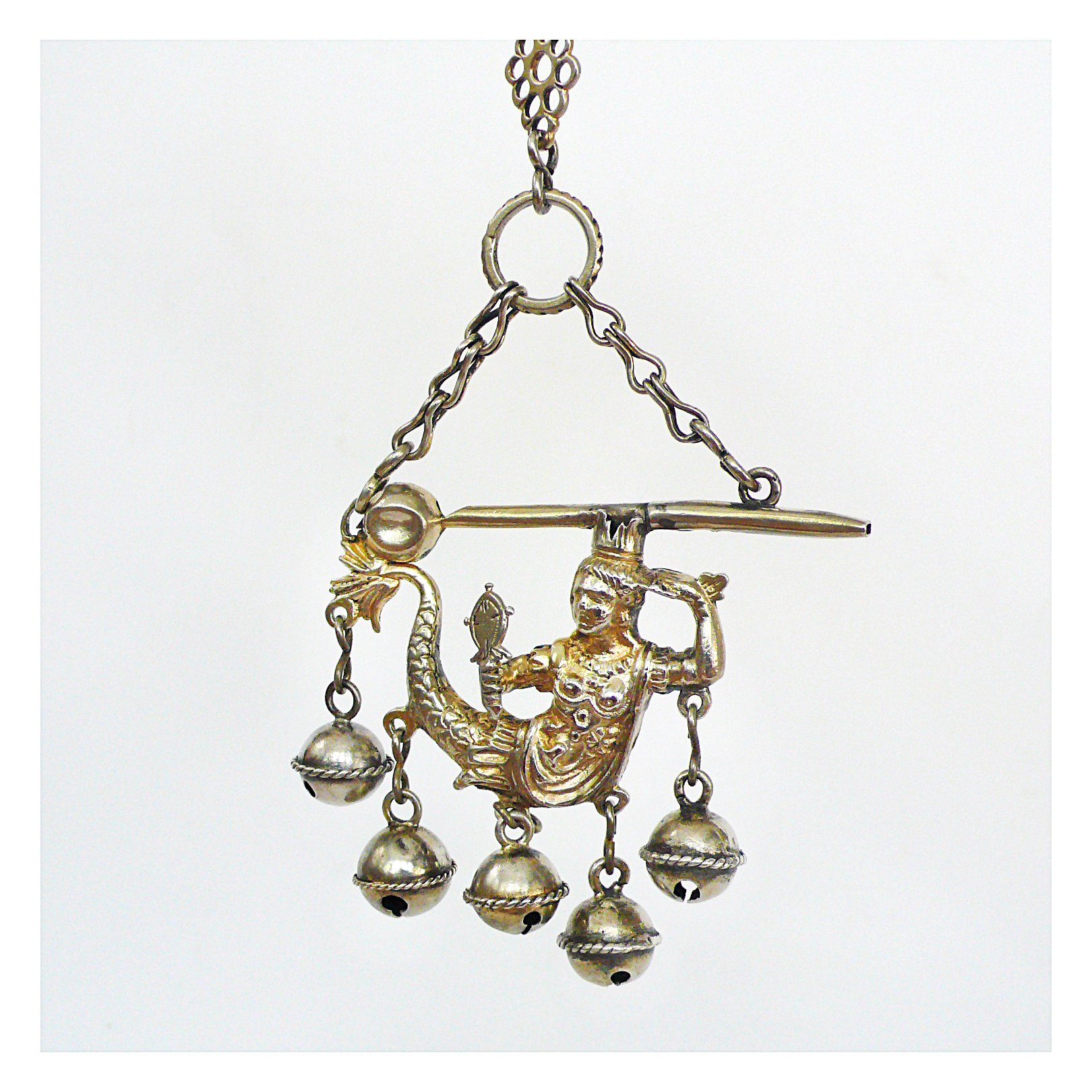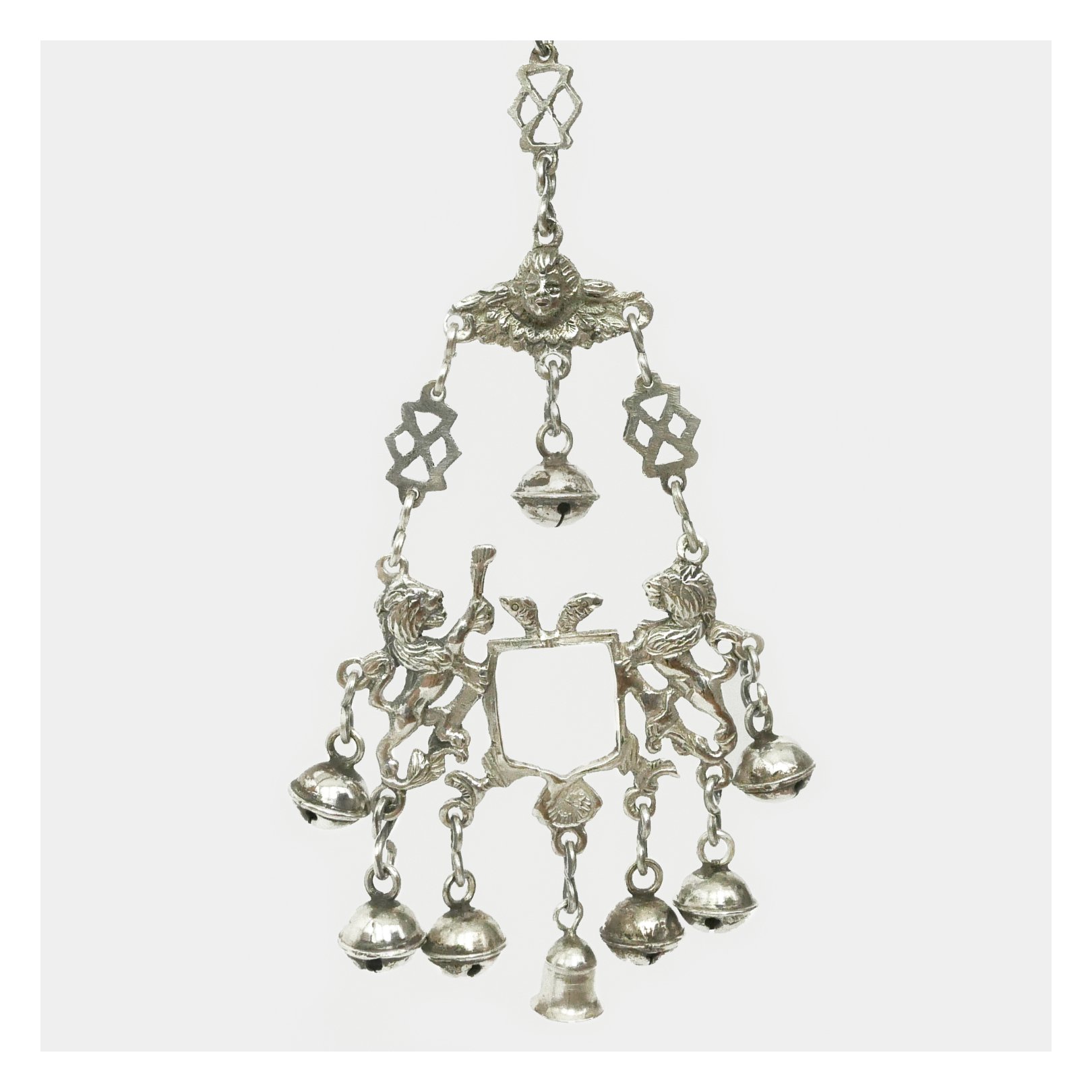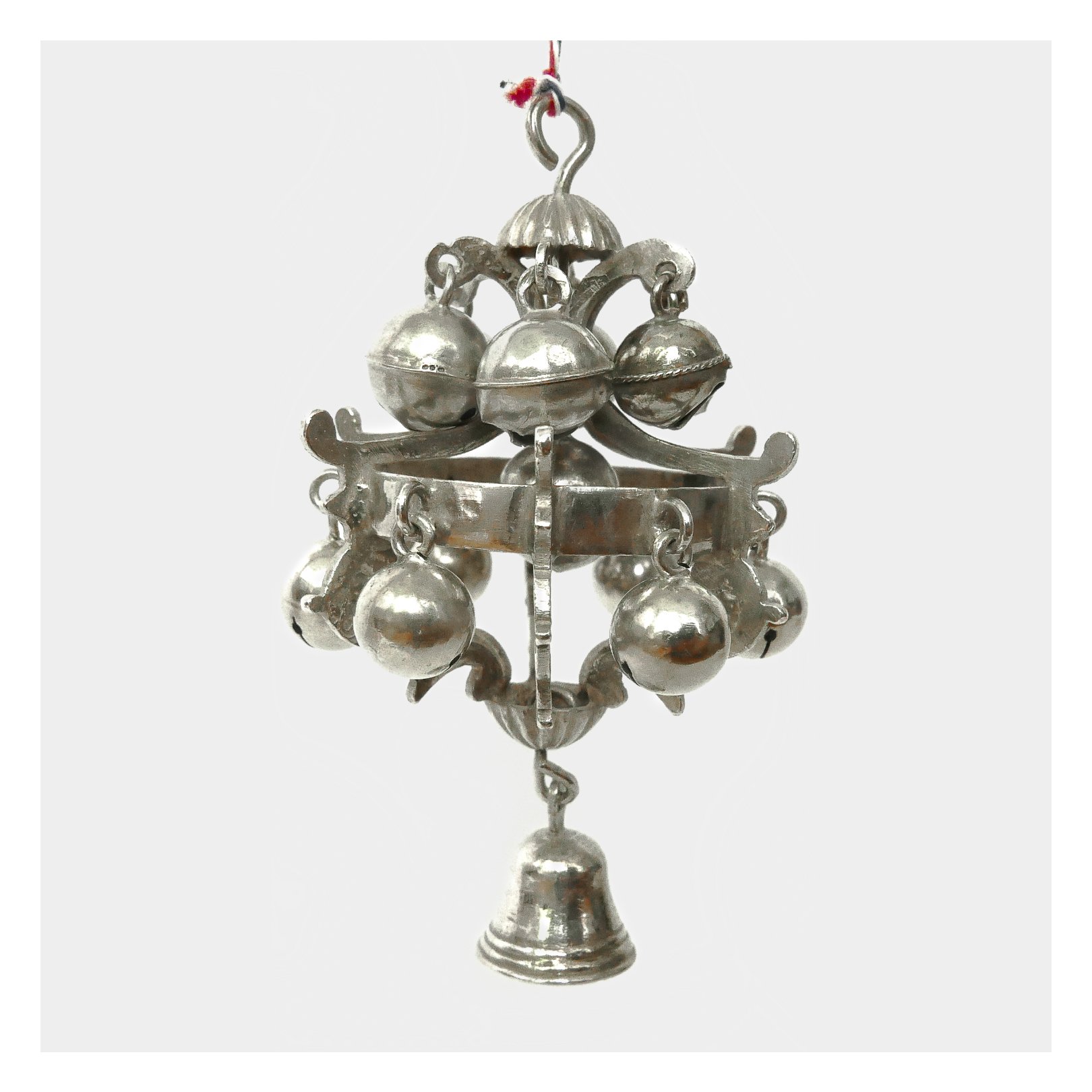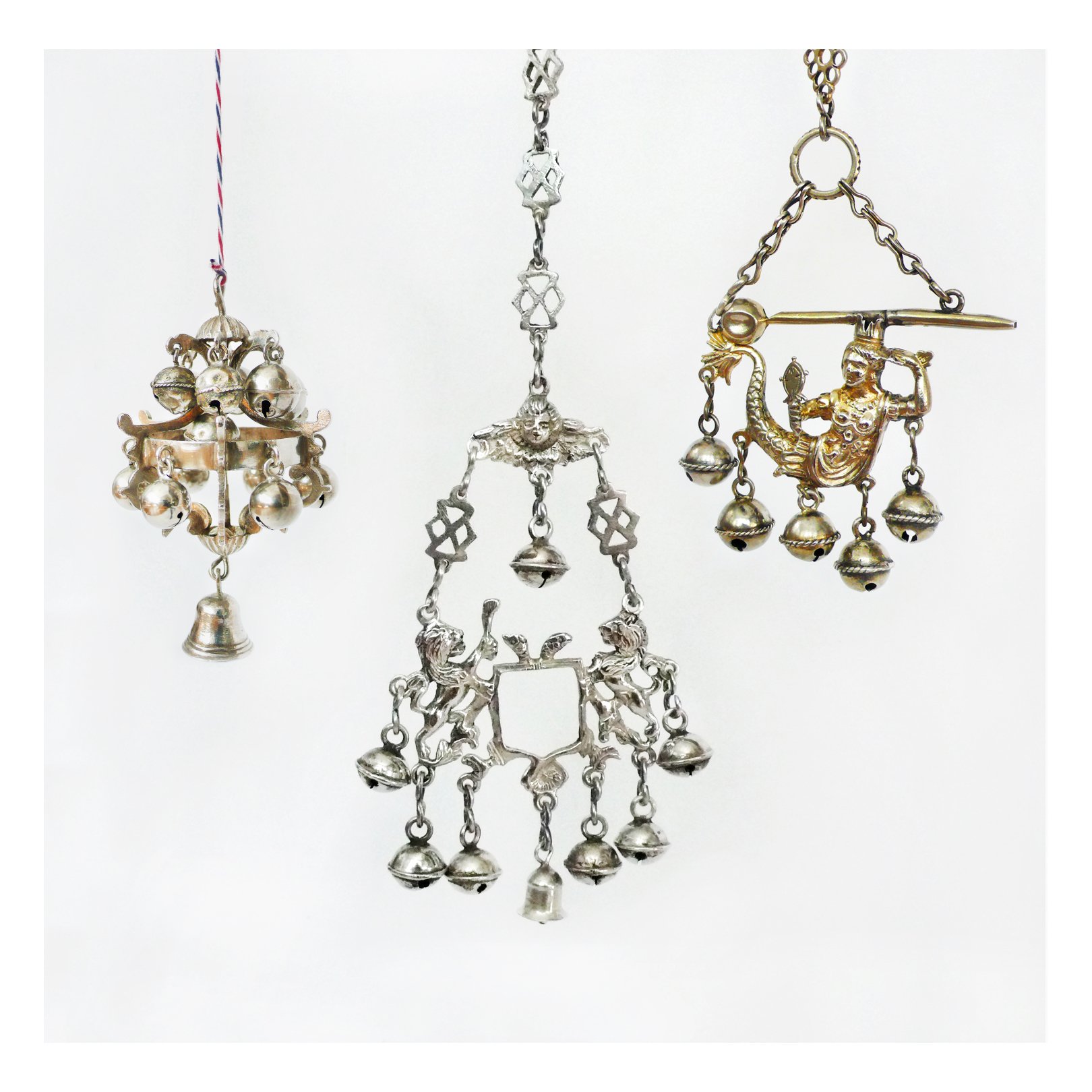Apotropaic Bell Pendants




Apotropaic Bell Pendants
18th Century Spanish Silver Apotropaic Bell Pendants.
The earliest silver bell pendants evolved from Medieval bestiaries and manuscripts and the fantastical jewels in enamel and precious gems of the Renaissance. A synthesis of familiar iconography and Mannerist expression, these pieces flourished throughout the territories of the expanding Spanish empire. Popular from the 17th-19th centuries, these apotropaic pendants were designed for small children - worn on belts and pinned to clothing. With the noise of bells and whistles, they joined a series of protective amulets including reliquaries, crosses, coral and jet Figas to avert many evils.
Holding a comb to her hair, this gilt-silver siren gazes into the hand-held mirror - an expression of vanity and tempting beauty. She balances a ball upon her raised tail with a functioning whistle atop her crown. Five bells below and various hand-made links allow for proper balance, movement and noise. Spanish drawings of jewelry depicting serena del mar first appeared in the 16th century. The mythological siren with her mirror references not only the beauty of Venus born from a shell, but a popular attribute of Prudentia. Well known to contemporary sailors, they are reminded of the trials of Ulysses, exhibiting caution in the face of dangerous temptation. Conveniently, this coincided with the ideal Christian sentiment of the time.
Cast silver lions support an heraldic escutcheon(coat of arms now missing) with an imperial double-headed eagle. Marshalled by Charles I of Spain(HRE Charles V) in 1530, it further represents the Habsburg monarchy and Empire of the German States. Rising above, a cherub floats at the apex of the pendant. Unique openwork links and ringing bells complete this protective device. Lions have always been known as the “king of beasts” and gaurdian icons of strength, fortitude and ambition. The lion rampant is featured in the earliest Royal arms of Spain, both as supporters(similar to the pendant) and as an heraldric emblem of Léon. In addition, with the development of astral maps and celestial guides in the 17th century, there emerged a new baroque interests in Leo as part of the zodiac constellations.
The silver child's rattle or sonajero with 13 bells is marked with a rampant lion and “MARTZ” for Mateo Martinez Moreno active in Córdoba, Andalucía 1781-1804.
